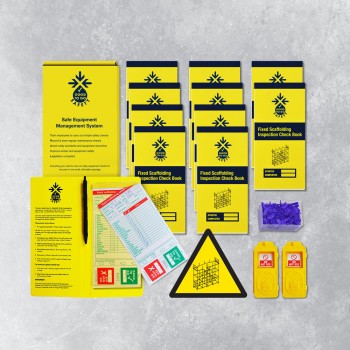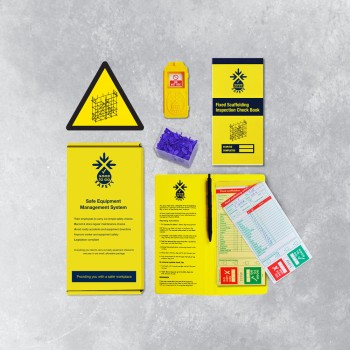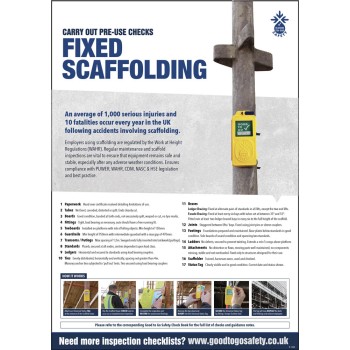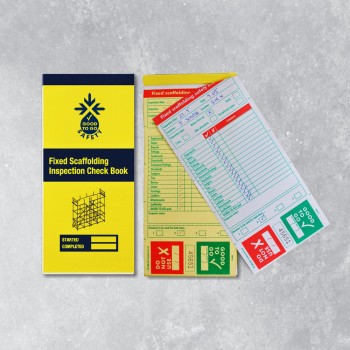A company in Kent has been fined after an accident occurred at a construction site of six houses on Smarden Road in Headcorn, Kent.
A sub-contractor, had been installing vertical hanging tiles on one of the new properties when he fell 1.8 metres through an unguarded opening in scaffolding and landed on the ground below. The accident happened on the 5th July 2017 and resulted in Mark Tolley sustaining several broken ribs and serious internal injuries including a punctured lung. He later died on 13 July 2017.
An investigation by the Health and Safety Executive (HSE) has found that Amberley Homes (Kent) Ltd, a construction company in Kent, did not control the construction site effectively. Its monitoring was ineffective and it did not act on concerns raised by its safety consultant when he highlighted issues with management.
Amberley Homes (Kent) Ltd, of London Road, Sevenoaks, Kent, entered a guilty plea to breaching Regulation 13(1) of the Construction (Design and Management) Regulations 2015 during a trial at Maidstone Nightingale Court in January 2024. The company was fined £25,000 and ordered to pay £83,842.34 in costs at Canterbury Crown Court on 15 March 2024.
HSE principal inspector Ross Carter said: “This tragic death could have been so easily avoided by implementing suitable site management to ensure that the scaffold was appropriately adapted by competent persons for the needs of the different sub-contractors.
“This case highlights that principal contractors should be aware that HSE will not hesitate to take appropriate enforcement action against those who fall below the required standards and do not plan, manage and monitor the construction phase effectively.”
Read the full HSE article:
Scaffolding must be designed, erected, altered and dismantled only by competent people and the work should be carried out under the direction of a competent supervisor.
Additionally it is the scaffold users / hirers responsibility to ensure that all scaffolding has been inspected as follows:
• Following the scaffoldings installation / before first use
• At an interval of no more than every seven days thereafter
• Following any circumstances liable to jeopardise the safety of the installation e.g. high winds
• All scaffolding inspection must be carried out by a competent person whose combination of knowledge, training and experience is appropriate for the type and complexity of the scaffold. Competence may have been assessed under the CISRS or an individual may have received training in inspecting a specific type of system scaffold from a manufacturer/supplier.
Make sure you're scaffolding is inspected regularly with Good to Go Safety or TakeAIM - the multi-award winning system which enables companies to complete safety inspections on workplace equipment.
A sub-contractor, had been installing vertical hanging tiles on one of the new properties when he fell 1.8 metres through an unguarded opening in scaffolding and landed on the ground below. The accident happened on the 5th July 2017 and resulted in Mark Tolley sustaining several broken ribs and serious internal injuries including a punctured lung. He later died on 13 July 2017.
An investigation by the Health and Safety Executive (HSE) has found that Amberley Homes (Kent) Ltd, a construction company in Kent, did not control the construction site effectively. Its monitoring was ineffective and it did not act on concerns raised by its safety consultant when he highlighted issues with management.
Amberley Homes (Kent) Ltd, of London Road, Sevenoaks, Kent, entered a guilty plea to breaching Regulation 13(1) of the Construction (Design and Management) Regulations 2015 during a trial at Maidstone Nightingale Court in January 2024. The company was fined £25,000 and ordered to pay £83,842.34 in costs at Canterbury Crown Court on 15 March 2024.
HSE principal inspector Ross Carter said: “This tragic death could have been so easily avoided by implementing suitable site management to ensure that the scaffold was appropriately adapted by competent persons for the needs of the different sub-contractors.
“This case highlights that principal contractors should be aware that HSE will not hesitate to take appropriate enforcement action against those who fall below the required standards and do not plan, manage and monitor the construction phase effectively.”
Read the full HSE article:
Scaffolding must be designed, erected, altered and dismantled only by competent people and the work should be carried out under the direction of a competent supervisor.
Additionally it is the scaffold users / hirers responsibility to ensure that all scaffolding has been inspected as follows:
• Following the scaffoldings installation / before first use
• At an interval of no more than every seven days thereafter
• Following any circumstances liable to jeopardise the safety of the installation e.g. high winds
• All scaffolding inspection must be carried out by a competent person whose combination of knowledge, training and experience is appropriate for the type and complexity of the scaffold. Competence may have been assessed under the CISRS or an individual may have received training in inspecting a specific type of system scaffold from a manufacturer/supplier.
Make sure you're scaffolding is inspected regularly with Good to Go Safety or TakeAIM - the multi-award winning system which enables companies to complete safety inspections on workplace equipment.










